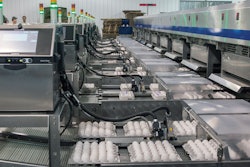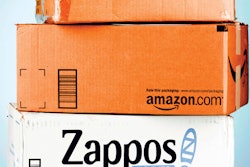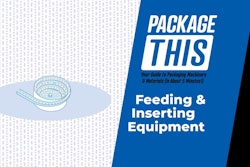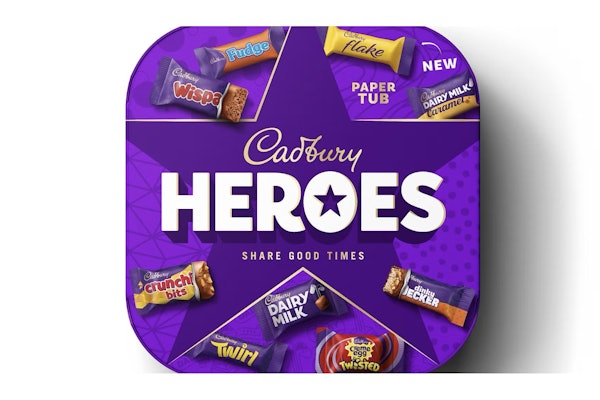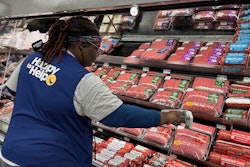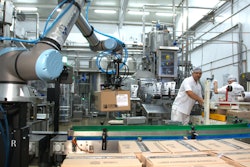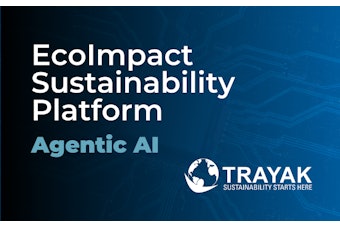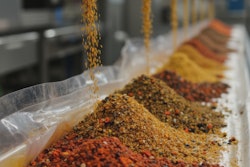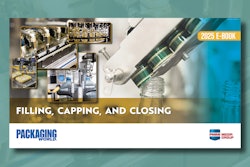Keeping a broad perspective, collaborating across departments, and leveraging “technology unlocks.”
If packaging innovation at PepsiCo were viewed as a three-legged stool, these would be the legs of that stool. That’s not to say that cost containment, manufacturing efficiency, commitment to sustainability, advanced IT, and a number of other things aren’t influential in shaping the Purchase, NY, food and beverage company’s packaging innovation efforts. But these all funnel into or support the big three.
That’s the impression I got, anyway, after a number of conversations with a handful of PepsiCo’s best and brightest. I started with Dr. Mehmood Khan, who is Executive Vice President, Chief Scientific Officer, and head of Global Research and Development. I also had the pleasure of talking with a Packaging Research Director and the Vice President of Global Beverage Packaging, both of whom report up to Khan.
Physician, nutritionist, endocrinologist, and former head of R&D at Takeda Pharmaceuticals—Khan’s resume is peppered with all of these previous roles and responsibilities. So if anyone is responsible for the broad perspective that PepsiCo takes in its approach to R&D and packaging innovation, it’s Khan. He explains why his diverse background fits—now more than ever.
“Historically the food and beverage industry has had a relatively narrow and short-term focus, where obvious things like processing, distribution, and sales were the drivers. But as the world has changed, consumers are increasingly interested in nutrition, in understanding origins and sources of food, and in understanding how food and beverages interact not just with taste but also with the body. There’s so much more awareness of the environment, too. So it’s essential for a head of R&D to have a broad perspective when it comes to looking at food and beverages and the packaging that contains them. That’s why we’ve brought in people with such diverse backgrounds, people with experience in biology, life sciences, computational modeling, agronomy—skills not typically thought of as being part of a food and beverage company.”
Since he became the head of R&D about seven years ago, Khan has led what many at PepsiCo refer to as an R&D transformation. Evidence of his transformative thinking is abundant in packaging, as he believes that packaging now more than ever must be part of the product experience, part of how the product is consumed. Ethnographic consumer research, which is the collection and analysis of empirical data on consumer behavior, is among the tools PepsiCo uses to make packaging part of the product experience. Khan points to the South American market for an example.
“We saw that a lot of people there liked to open up their snacks and add toppings to them, things like cheese or seasonings. This meant they had to empty the bag contents into a separate container and then add the seasonings. So we asked ourselves how do we make the package itself suitable for use in a way that eliminates the need for the separate container while still keeping the price where it needs to be. It led to the launch of our Lays brand in a reconfigured pillow bag that’s reclosable. The packaging equipment is the same, but we can change the way that it’s formatted so that it produces a reclosable bag.”
The fundamental roles of packaging are of course viewed as givens at PepsiCo. But moving beyond that, how does PepsiCo communicate a product’s key attributes, and how should packaging maximize the effectiveness of that communication? Lee Nicholson, Director of Advanced Packaging Research, thinks interactive packaging is one of the answers.
“Packaging today is dictated by what I like to call the four Cs: containment, convenience, communication, and custody, which is another word for security or tamper evidence. What’s missing is the fifth C, and that is connectivity. Packages would be far more enabled and the consumer experience could be so much richer if the industry could create an interactive connected package that provided a differentiated and personalized experience involving a multiway transfer of data.
“One of the things we’ve been pioneering in the area of interactive packaging is what we call the packaging trifecta. It’s a multiway communication enabled by or through packaging that links brand owner with retailer with consumer. We think of it as an ecosystem of connectedness.”
Packaging as strategic asset
Another thing that quickly becomes clear in talking with PepsiCo is that packaging is not applied as an afterthought once a new product or product extension has been developed. Instead, packaging is viewed as a strategic asset, says Denise Lefebvre, Vice President of Global Beverage Packaging.
“When I joined the organization eight years ago we knew packaging drew volume growth and was important to the consumer,” says Lefebvre. “But what’s also become apparent is that it has a tremendous impact on both the top and bottom lines. Once people understand its value and what it can bring, then it occupies a more strategic place in the portfolio.”
Talking with Lefebvre also serves as a reminder of how serious PepsiCo is when it comes to collaborating across departments.
“We take a holistic approach to packaging,” she points out. “We examine new technologies and look closely at consumer trends. Then we team up with our internal partner organizations, such as marketing and supply chain, to ideate and come up with the best ideas that are going to meet the needs of our consumers and customers. We have a robust ideation process that includes trend setting, foresight, and then certainly collaboration with our internal partners. We then take those insights and concepts and work with our design team—we have an in-house design team that is very strong—and we see the concept all the way through to execution and operations. By this time our engineers have done a lot of robust work around modeling and different capabilities, so that we have really sharp development once we lock in the concept and innovation. Having these development tools and processes in place is important when you have a large system like ours, because it helps us execute flawlessly across that system. The goal, of course, is that when the package reaches the consumer, it’s true to the design thinking behind it and to the marketplace.”
Nicholson echoes Lefebvre’s thoughts on the importance of collaboration. He credits Khan with shaping the corporate R&D function in such a way that collaboration is among its most essential underpinnings.
“The corporate research function here has evolved tremendously over the past several years,” says Nicholson. “What’s been fostered is a wonderful spirit of collaboration and innovation. As a result, we’ve had a lot of success in attracting top talent and in building a truly innovative environment. Senior leadership has thought really comprehensively about how best to organize multiple functions and business units to be better integrated. The result is that as we move forward, we’re uniquely positioned to deliver on top-line and bottom-line growth, to deliver on performance with purpose.”
According to both Nicholson and Lefebvre, Khan’s vision is based on the recognition that innovation requires an incubation period, and without the proper resources, incubation is out of the question. Nicholson puts it this way: “If we want to be disruptive and transformational in our innovation process, we need time, commitment, and support. So I think it’s terrific what senior management has done with corporate R&D. As an organization we have a long-term vision and the resources needed to support it, a roadmap if you will. This is what permits product and package differentiation for the future.”
Technology unlock
Mentioned earlier as one leg in PepsiCo’s three-legged packaging innovation stool is the idea of leveraging “technology unlocks,” the term PepsiCo uses for technology that solves a business problem. Printed electronics, says Nicholson, is potentially a technology unlock.
“If we can print electronic circuits on a packaging substrate just like we print ink on paper, that’s a technology we must explore,” says Nicholson. “In pharma, wines, spirits, and other places where the price points are a bit higher, they’ve begun to reap the benefits of this form of interactive packaging. For us in the food and beverage industry, where price points obviously aren’t so high, we have to look at such unlocks and see if there’s a way to bring the cost of the technology down.”
Lefebvre cites the recent redesign of the 28-oz PET Gatorade bottle as another example of how emerging packaging technologies solved a business problem.
“What we were after was a sleeker look to the bottle, and two technology unlocks allowed us to get there,” says Lefebvre. “First, we partnered with our suppliers to develop a new technology for absorbing the internal vacuum pressure that builds up when a hot-filled PET bottle cools down. Not only did this allow us to do away with the not-so-sleek vacuum-absorbing sidewall panels that are typically used, it also meant shaving 6 grams from the bottle weight.” The injection/stretch blow-molded PET bottle went from 45 to 39 grams.
The second technology unlock involved labeling. Instead of buying shrink-sleeve labels that are cut from a continuous tube and dropped over individual bottles, PepsiCo now takes advantage of new packaging machinery technology—from an unnamed source—that lets them form a sleeve label from flat film. The flat label stock comes in a continuous roll of oriented polypropylene. The new machinery cuts individual labels to length and welds the leading and trailing edges before dropping the formed label over a bottle. From there, the bottle’s passage through the shrink tunnel is pretty much the same as it is with any other shrink-sleeve label. But because PepsiCo doesn’t have to pay a label supplier to form film into a continuous tube, the new label costs less. It also shrinks tightly against the bottle sidewalls, contributing to the sleeker look that was the initial goal.
One good place to seek out the next new technology unlock, of course, is a show like PACK EXPO or interpack. Nicholson says he relies on these shows for networking. “We’re always looking for innovative new technologies, new materials and processes, and new ways to convert materials. So at shows like PACK EXPO or interpack, I make a point of visiting startups that may have something new to say. I also spend time with some of the big, established players that I know have strong R&D thinkers in their organization. These shows are a good way to understand what’s on tap.”
But as Director of Advanced Packaging Research, Nicholson says it’s incumbent upon him to also pay close attention to shows focused not on packaging but on things like pharma, biologicals, consumer electronics, or printed electronics. “Remember, my team and I are tasked with looking three to five years down the road,” he points out. “We’re often looking at categories adjacent to packaging and maybe outside the packaging arena per se. It’s in these other industries—I would also include automotive, aerospace, and semiconductors—where you find people playing with the newest technologies and exploring these new spaces first. We don’t have to reinvent the wheel here. But we have to learn from those who are out in front if we want to be at the leading edge of packaging innovation.”
Comments like these are pretty clear signs that an R&D transformation has indeed occurred at PepsiCo. Khan refers to it as “growing the R&D investment.” It’s why PepsiCo now has R&D centers in Mexico, Germany, Moscow, Shanghai, and Dubai. As he puts it, “We’ve taken a large footprint and strategically grown it in a very targeted way.”
Throughout this entire process of growth and transformation echoes the three-pronged leitmotiv of perspective, collaboration, and technology. And don’t dare mention packaging as being in any way siloed from processing.
“You can’t separate the two,” says Khan. “Look, for example, at what we’ve done in what we call our Microvalue Processing initiative. It’s a food processing line that takes in raw ingredients at the front end and gives you packaged products for sale at the other end, and the entire thing fits on a 16-wheel truck. It’s revolutionary. Back it up to a local warehouse and you’re good to go. Detroit is our first pilot, where we’re producing a savory snack made right in the community where it’s sold. It’s a true commercial pilot of how the future might look. Think about how it might fit developing parts of South America, Asia, or Africa, where large-scale production facilities don’t make economic sense given the cost of distribution and so on. Packaging is central to all of this. This is an example of how R&D is being transformed here. It’s not just product development. We’re changing our very business model.”




